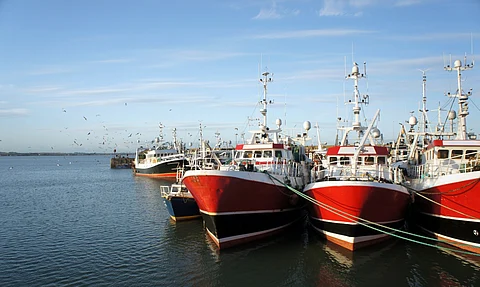

In 2022, the fleet landed over 175,800 tonnes valued at €287 million representing decreases of -15% in live weight and -12% in landed value compared to 2021.
Photo: Adobe Stock.
The Irish fishing sector encountered significant economic difficulties in 2022, according to the Annual Fisheries Report from Ireland's seafood development agency, Bord Iascaigh Mhara (BIM).
The report, which draws on data from Ireland's National Seafood Survey, highlights the ongoing Ukraine conflict and the lingering effects of Brexit as key contributing factors to declines in both revenue and profitability suffered by the industry in 2022.
Based on the activities of 1,318 active vessels, the report revealed that Ireland's fleet revenue dropped by 10% in 2022, falling to €311.8 million. Meanwhile, Gross Value Added (GVA) decreased sharply by 30% to €137.5 million, and gross profit plummeted by 82%, landing at €17 million. While €23.9 million in subsidies from the Brexit Adjustment Reserve (BAR) and the European Maritime, Fisheries and Aquaculture Fund (EMFAF) helped to offset some of these losses, these funds were not included in the revenue and gross profit calculations for the year.
Dr. Sarah Perry, BIM's National Seafood Survey Coordinator, said that 2022 was a year marked by "huge challenges" for the fishing industry. She noted that geopolitical factors, including high fuel prices, inflation, and reduced fishing quotas, created tough operating conditions.
“The highest ever response from vessel owners to the last National Seafood Survey helped BIM to gain valuable insights into the impacts these challenges had on the economic performance of the fleet at a national and segment level as outlined in the report,” Perry said.
In 2022, the Irish fleet landed over 175,800 tonnes of fish, valued at €287 million. This marked a 15% decline in live weight and a 12% reduction in landed value compared to the previous year. Despite these decreases, the fishing sector remained a critical employer, supporting an estimated 2,687 jobs, equivalent to 1,745 full-time roles. The report highlights the industry's ongoing importance to rural coastal communities and its contribution to the broader economy, BIM said.
Looking ahead, forecasts for 2023 suggest an improvement in economic performance, with further gains expected in 2024 despite anticipated reductions in both landing weight and value. This optimistic outlook is driven by a projected decrease in operational costs.
“BIM relies on vessel owners for their consistent support and goodwill to complete the survey so we can capture an accurate picture of the catching sector. We want to thank each vessel owner who took the time to participate in this survey," Perry said, explaining that the annual survey plays a crucial role in helping both the industry and policymakers understand the current challenges and opportunities, while also supporting the justification of national and EU grant aid programs under the Common Fisheries Policy.
BIM is set to launch the next National Seafood Survey on 30 September 2024, inviting vessel owners to contribute their 2023 data.
